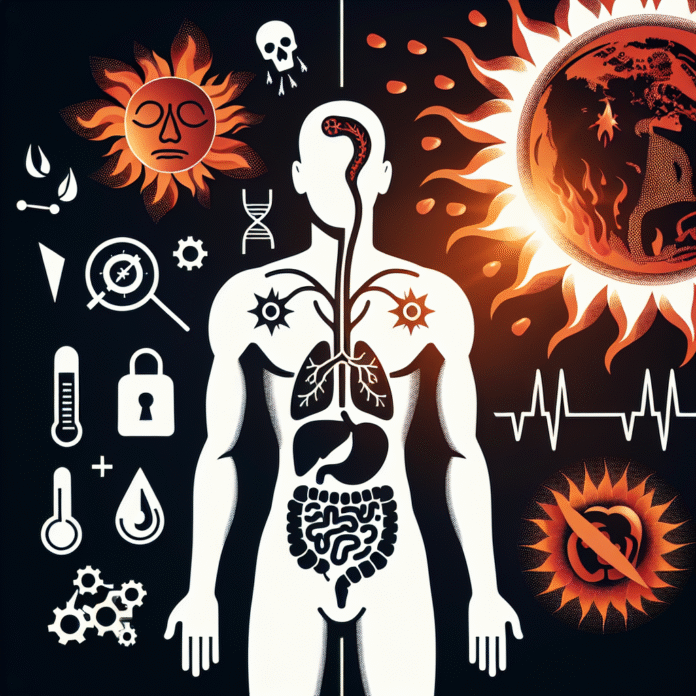Human Physiology Strategies Against Heatwave Fatalities
Focus on Human Physiology to Combat Heatwave Deaths
As climate change intensifies, heatwaves are becoming more frequent and severe, posing significant risks to human health. Understanding human physiology is essential in developing effective strategies to mitigate the impact of extreme heat events.
Understanding the Human Body’s Response to Heat
The human body has evolved mechanisms to maintain a stable internal temperature, primarily through processes such as sweating and increased blood flow to the skin. However, during extreme heat conditions, these physiological responses can become overwhelmed. When the body is unable to cool itself effectively, it can lead to heat-related illnesses such as heat exhaustion and heat stroke, which can be fatal if not promptly addressed.
Risk Factors for Heat-Related Illnesses
Certain populations are more vulnerable to heat-related illnesses, including the elderly, infants, individuals with chronic health conditions, and those who work outdoors. Additionally, factors such as high humidity can exacerbate the body’s inability to cool down, increasing the risk of heat stress.
Prevention Strategies
To combat heatwave deaths, it is crucial to implement preventive measures that focus on human physiology. Here are some strategies that can help:
1. **Public Awareness Campaigns**: Educating the public about the signs of heat-related illnesses and the importance of hydration can empower individuals to take proactive steps during heatwaves.
2. **Community Cooling Centers**: Establishing accessible cooling centers can provide relief for those without air conditioning, particularly for vulnerable populations.
3. **Hydration Initiatives**: Encouraging regular fluid intake is vital. Local authorities can distribute free water bottles or install more public water fountains to promote hydration.
4. **Workplace Regulations**: Employers should implement policies to protect outdoor workers during extreme heat, including adjusting work hours, providing shaded rest areas, and encouraging regular breaks.
Advancements in Technology
Recent advancements in technology also offer promising solutions to mitigate the effects of heatwaves. Wearable devices that monitor body temperature and hydration levels can alert individuals to potential heat stress, allowing for timely intervention. Additionally, climate-responsive urban planning can create more heat-resilient cities, incorporating green spaces and reflective materials to reduce urban heat islands.
Conclusion
As heatwaves become a more pressing issue, focusing on human physiology and understanding how our bodies respond to extreme temperatures is crucial in preventing heatwave-related deaths. By combining public health initiatives, technological advancements, and community support, we can better protect vulnerable populations and ensure a safer environment during extreme heat events. Collaboration among governments, health organizations, and communities is essential in creating a comprehensive approach to tackling this growing challenge.
